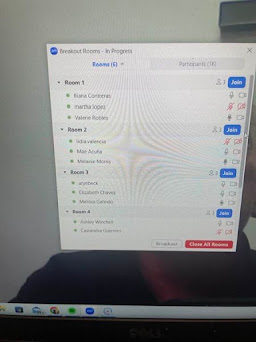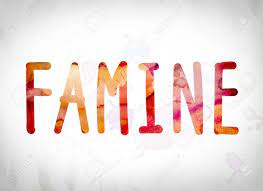=================================================================
LUKE 11 "Prodigal Son"
Then Jesus[a] said, “There was a man who had two sons. 12 The younger of them said to his father, ‘Father, give me the share of the wealth that will belong to me.’ So he divided his assets between them.
13 A few days later the younger son gathered all he had and traveled to a distant region, and there he squandered his wealth in dissolute living. 14 When he had spent everything, a severe famine took place throughout that region, and he began to be in need. 15 So he went and hired himself out to one of the citizens of that region, who sent him to his fields to feed the pigs. 16 He would gladly have filled his stomach[b] with the pods that the pigs were eating, and no one gave him anything. 17 But when he came to his senses he said, ‘How many of my father’s hired hands have bread enough and to spare, but here I am dying of hunger! 18 I will get up and go to my father, and I will say to him, “Father, I have sinned against heaven and before you; 19 I am no longer worthy to be called your son; treat me like one of your hired hands.” ’ 20 So he set off and went to his father. But while he was still far off, his father saw him and was filled with compassion; he ran and put his arms around him and kissed him. 21 Then the son said to him, ‘Father, I have sinned against heaven and before you; I am no longer worthy to be called your son.’[c] 22 But the father said to his slaves, ‘Quickly, bring out a robe—the best one—and put it on him; put a ring on his finger and sandals on his feet. 23 And get the fatted calf and kill it, and let us eat and celebrate, 24 for this son of mine was dead and is alive again; he was lost and is found!’ And they began to celebrate.
25 “Now his elder son was in the field, and as he came and approached the house, he heard music and dancing. 26 He called one of the slaves and asked what was going on. 27 He replied, ‘Your brother has come, and your father has killed the fatted calf because he has got him back safe and sound.’ 28 Then he became angry
and refused to go in. His father came out and began to plead with him. 29 But he answered his father, ‘Listen! For all these years I have been working like a slave for you, and I have never disobeyed your command, yet you have never given me even a young goat so that I might celebrate with my friends. 30 But when this son of yours came back, who has devoured your assets with prostitutes, you killed the fatted calf for him!’ 31 Then the father[d] said to him, ‘Son, you are always with me, and all that is mine is yours. 32 But we had to celebrate and rejoice, because this brother of yours was dead and has come to life; he was lost and has been found.’ ”Read full chapter'
See it here in the original book.
The big idea:
What goes without being said for us can lead us to miss important details in a Bible passage, even when the author is trying to make them obvious. Mark Allan Powell offers an excellent example of this phenomenon in “The Forgotten Famine,” an exploration of the theme of personal responsibility in what we call the parable of the prodigal son. Powell had twelve students in a seminary class read the story carefully from Luke’s Gospel, close their Bibles and then retell the story as faithfully as possible to a partner. None of the twelve American seminary students mentioned the famine in Luke 15:14, which precipitates the son’s eventual return. Powell found this omission interesting, so he organized a larger experiment in which he had one hundred people read the story and retell it, as accurately as possible, to a partner. Only six of the one hundred participants mentioned the famine. The group was ethnically, racially, socioeconomically and religiously diverse. The “famine-forgetters,” as Powell calls them, had only one thing in common: they were from the United States.
Later, Powell had the opportunity to try the experiment again, this time outside the United States. In St. Petersburg, Russia, he gathered fifty participants to read and retell the prodigal son story. This time an overwhelming forty-two of the fifty participants mentioned the famine. Why? Just seventy years before, 670,000 people had died of starvation after a Nazi German siege of the capital city began a three-year famine. Famine was very much a part of the history and imagination of the Russian participants in Powell’s exercise. Based solely on cultural location, people from America and Russia disagreed about what they considered the crucial details of the story.
Americans tend to treat the mention of the famine as an unnecessary plot device. Sure, we think: the famine makes matters worse for the young son. He’s already penniless, and now there’s no food to buy even if he did have money. But he has already committed his sin, so it goes without being said for us that the main issue in the story is his wastefulness, not the famine. This is evident from our traditional title for the story: the parable of the prodigal (“wasteful”) son. We apply the story, then, as a lesson about willful rebellion and repentance. The boy is guilty, morally, of disrespecting his father and squandering his inheritance. He must now ask for forgiveness.
Christians in other parts of the world understand the story differently. In cultures more familiar with famine, like Russia, readers consider the boy’s spending less important than the famine. The application of the story has less to do with willful rebellion and more to do with God’s faithfulness to deliver his people from hopeless situations. The boy’s problem is not that he is wasteful but that he is lost.
Our goal in this book is not, first and foremost, to argue which interpretation of a biblical story like this one is correct. Our goal is to raise this question: if our cultural context and assumptions can cause us to overlook a famine, what else do we fail to notice? link
- How many spotted me in the "Roll Away the Stone" video?
- How many got what I was looking for of Apostles Creed?
- How many aced their draft?
---------- Watch this 17 minute "Lamb of God" video below and I challenge you to use it as a class source for your paper
This video is again with our tour guide Ray Van Der Laan, but on the thumbnail pic on the video you will see instead your own Dave at the same place this video was filmed. Maybe you can come to Israel with Dave next year as your tour guide. Interested? Bad dad jokes included. Let me know. It'll be unforgettable, and no homework.
You'll appreciate this video's opening minutes, as you'll see again the Jericho to Jerusalem road from the Good Sam parable, and see another way Jesus can be retempted/tested as he heads to the cross on what we call Palm Sunday/Triumphal Entry.
Give major attention to the idea of what people then expected the Messiah to be (what kind of Lamb; What kind of King did they expect on Lamb Selection Day? Mention political expectations, as you'll remember Kraybill says many temptations are political) and how Jesus subverted expectations. How did they (and how do we now) misunderstand Jesus and his mission? His Kingdom?
Can you imagine if Jesus showed up at the altar next Sunday in your church or the church you visit for class?. Imagine what you might say or do. Would it cross your mind to say "Please be our president," as you wave the American flag at him? Probably not! But watch the video for a way we might misunderstand Jesus in a similar way.
If you have Palm Sunday processions at your church, maybe kids march in, telling "Hosanna," and we think it's a good thing. Talk about how the Three Worlds understanding of palm branches changes everything abut this misunderstanding
You will probably be moved by the closing stories about two ways Jesus cries. You might comment on that.
How might he cry over you/us/the American church?
=
We cl




















